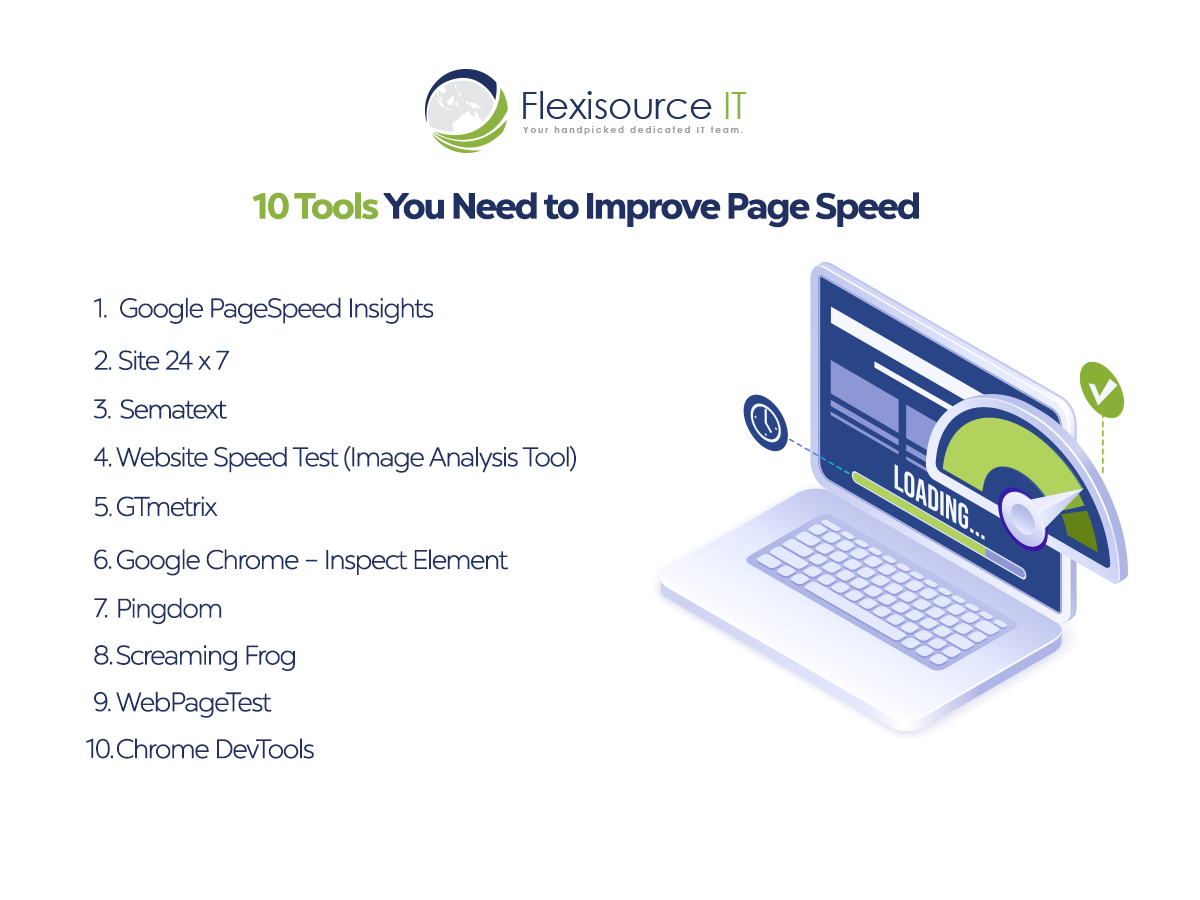It’s a well-known fact that a fast website is more profitable than those that are not. After all, speed is one of the most essential elements of a website. It affects customer satisfaction, conversion, retention, and more.
That is why most developers and marketers try their best to improve their websites. After all, the second delay in page load times can lead to 11% fewer page views. But what if I tell you that you can improve your Page Speed easier?
This article will tackle the definition of Page Speed, why it is essential, and 10 Page speed optimisation tools.
What is Page Speed?
Page speed measures how quickly a web page can be downloaded from the internet and displayed in a browser. Fast page speed is crucial because it makes your site more user-friendly, especially on mobile devices.
Likewise, Page Speed also affects how long a user waits before they can start interacting with the page. In fact, according to a 2019 study conducted by Portent, the best loading times for a page for a good conversion is 0-4 seconds.
Why is Page Speed Important?
With more and more people accessing the internet on their mobile phones, page speed has become a crucial metric for any website. Google’s search engine penalises sites with a slower loading time. Likewise, it is essential to note that page speed is not just about how fast your page loads but also how quickly it responds to user input. The faster a website loads, the higher it ranks on Google search results pages, and the more likely visitors will click on it.
The higher the site’s page speed, the better for SEO.
10 Page Speed Optimisation Tools
Many optimisation strategies to improve your page speed, but some are more effective than others. And you can do these tasks using various tools such as the following.

1. Google Page Speed Insights
Google Page Speed Insights is one of the most popular page speed optimisation tools that help developers measure their web pages’ performance. It provides suggestions for improving the website’s speed, such as using fewer resources, optimising images and CSS, and reducing the number of redirects.
Likewise, the tool also provides recommendations for faster hosting and caching techniques. It offers a free service to test the load time of a webpage. The results will be shown in detail with suggestions for improvement.
2. Site 24 x 7
Another top page speed optimisation tool available online is Site 24×7. Site 24×7 is a web monitoring and analytics solution that helps businesses monitor their website and customer experience. It provides you with real-time visibility into the health of your site, the performance of your site, the impact on conversions, and the quality of your customer experience.
3. Sematext
Sematext is a service that helps you monitor and understand your systems, apps, and code. It specialises in monitoring, analysing, and understanding the inner workings of IT infrastructure. This tool provides many integrations with other services to provide a complete infrastructure overview.
As such, this tool is perfect for testing your website speed. You can track core web vitals and other vital metrics that affect your website’s performance and speed. Through this tool, you will know parts that you can enhance to improve your website. This makes Sematext one of the best page speed optimisation tools.
4. Website Speed Test (Image Analysis Tool)
If you are looking for a way to optimise your images, then the website speed test is the perfect tool. This tool analyses the photos on the page and provides a detailed report on how fast they load and what can be done to improve the loading time.
The tool also provides information about whether the images are optimised for faster loading, blocking other resources, if they have any unnecessary scripts or rich content, etc.
5. Gtmetrix
GTmetrix is one of the best free page speed optimisation tools that checks a website’s speed and performance. It provides valuable insights into the website’s loading time, number of requests, page size, and more.
Likewise, Gtmetrix also has an API that enables developers to integrate its features into their applications.
6. Google Chrome – Inspect Element
Google Chrome is a web browser made by Google. It is the most popular browser in the world. It has many valuable features not available in other browsers, such as the ability to save passwords, autofill data, and open multiple windows simultaneously.
Inspect Element is one of Chrome’s features that helps you understand your website. It is a fantastic way of looking at the HTML code that makes up that webpage. You can use it to find out what CSS styles are being applied to an element or what HTML tags it has inside it.
7. Pingdom
Swedish-based company Pingdom AB created Pingdom in 2005 with headquarters in San Mateo, California. This tool is an online monitoring service that allows you to monitor websites, servers, and other internet properties.
Likewise, Pingdom offers some features that allow a user to see the current status of their website or server. These features include uptime, response time, and the number of visitors. Pingdom also offers alerts for any changes in the status of your website or server.
8. Screaming Frog
Screaming frog is a program that crawls through a website and generates an XML or CSV file of the site’s content. SEO professionals and web developers mainly use it to check if the site is well optimised, find broken links, and identify duplicate content.
Likewise, the Screaming frog can also be used as a page speed optimisation tool by connecting to the PageSpeed Insights API. This will help you gather speed data at scale.
9. WebPageTest
Webpagetest is one of the most potent Pagespeed optimisation tools for analysing and testing websites. It helps developers, designers, and content strategists to optimise their web site for the best possible performance.
Likewise, this tool provides all the information needed to determine what is slowing down a website and how it can be improved. The analysis includes the site’s load time, code quality, image optimisation, browser compatibility, and more.
10. Chrome DevTools
Lastly is one of the most influential and free page speed optimisation tools provided by Google Chrome DevTools. Chrome DevTools is a great help for developers to navigate the website and inspect elements that affect its performance.
This tool can inspect site speed by profiling and reloading elements such as icons, images, etc.
Conclusion
In summary, website speed is an essential aspect of a website. It determines the website’s loading time and how user-friendly it is. And as business owners, we need to always look after website speed. I hope this article has helped you find the perfect page sped optimisation tools you need! And if you need further help, Flexisource IT’s SEO specialist and Developers can help you! Contact us now!





